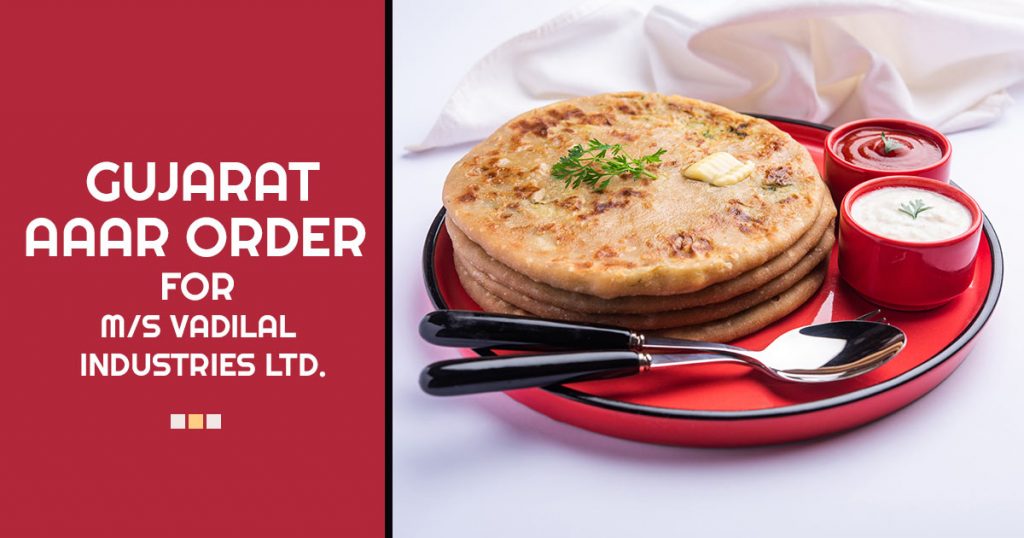
The Gujarat Appellate Authority of Advance Ruling (AAAR), in keeping with the ruling of AAR, has ruled that 18% GST is to be levied on parathas.
The two-member bench of Vivek Ranjan and Milind Torawane sees that the parathas differ from a plain chapatti/roti and thus could not be counted beneath the class of plain chapatti or roti. Under Chapter Heading 2106, the specific classification of parathas has been described.
The petitioner has been engaged in producing paratha and produces 8 types of paratha as Malabar Paratha, Mixed Vegetable Paratha, Onion Paratha, Methi Paratha, Alu Paratha, Laccha Paratha, Mooli Paratha, and Plain Paratha. Wheat flour and additional ingredients like aloo, vegetables, mooli, onion, methi, etc are the major ingredients of all varieties of paratha.
The parathas are supplied and sold via them in packed condition made by placing them directly on a pre-heated flat pan or griddle to be heated on a medium flat pan or griddle to be heated on a medium flame for about 3 to 4 minutes. While the paratha is to be flipped every 30 seconds.
For the Classification along with the GST rates of distinct varieties of parathas, the petitioner seeks the advanced ruling.
The Gujarat Authority of Advance Ruling held that the merit classification of parathas is at HSN 21069099 and should be levied with 18% GST. From the ruling of GAAR, the petitioner was dissatisfied.
Petitioner, GAAR has done a mistake in observing that parathas would not be counted beneath Chapter Heading 1905 since they need 3 to 4 minutes of cooking. It is nowhere cited in the GST HSN rate and Tariff explanatory notes to Chapter 19, that Heading 1905 only covers ready-to-eat products.
The petitioner has given the example of pizza bread covered beneath Heading 1905 would indeed be qualified as a concessional rate of duty including a 5% GST shall be levied on the pizza bread, rusk, and toasted bread. Heating and cooking are needed for the pizza bread along with the toasted bread. It, therefore, renders that Heading 1905 is not confined to products that are ready for consumption.
The petitioner mentioned that parathas are similar to roti or chapatti, which are classifiable under Heading 1905 and are applicable for 5% Goods and service tax.
Read Also: Can One GST Rate Make Product Classification Easier, Check
AAAR, different types of parathas would have one common ingredient i.e. wheat flour, and other ingredients like water, edible vegetable oil, salt, antioxidants, potato, vegetables, radish, onion, methi, and others but only wheat flour and water are required to make the plain roti or chapatti. The composition of ingredients used in paratha differs from that used to make roti.
AAAR sees that the procedure takes 3 to 4 minutes of heating amounts to cook the parathas since their colour changes and the frozen parathas would become ready for consumption. Compared to roti or the items that come beneath chapter heading 1905, they would be ready to eat and such things do not need any more processing prior to consumption. The appellate authority and the end users do not get revealed the variety of the product including a number of factors that are required to be regarded. On the basis of merits, the products are required to be classified, and the parathas are different from plain chapattis.
| Name of the Appellant | M/s Vadilal Industries Ltd. |
| AAR Ruling No. | GUJ/GAAAR/APPE AL/2022/20 |
| Date | 28.07.2022 |
| GSTIN | 24AAACV4887FIZ6 |
| Counsel For Respondent | Shri Amal Dave. Advocate |
| Gujarat GST AAAR | Read Order |